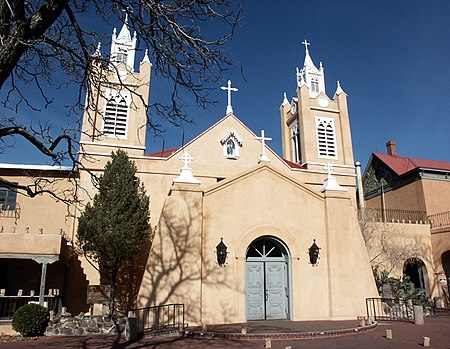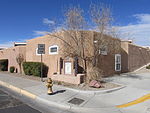Old Town Albuquerque

Old Town is the historic original town site of Albuquerque, New Mexico, for the provincial kingdom of Santa Fe de Nuevo México, established in 1706 by New Mexico governor Francisco Cuervo y Valdés. It is listed on the New Mexico State Register of Cultural Properties as the Old Albuquerque Historic District, and is protected by a special historic zoning designation by the city. The present-day district contains about ten blocks of historic adobe buildings surrounding Old Town Plaza. On the plaza's north side stands San Felipe de Neri Church, a Spanish colonial church constructed in 1793.Old Town is a popular tourist destination with a large number of restaurants, shops, and galleries, and is also home to the Albuquerque Museum of Art and History. The New Mexico Museum of Natural History and Science and the Explora science center are located a short distance to the northeast. Old Town is known for its luminaria displays during the holiday season, particularly on Christmas Eve.
Excerpt from the Wikipedia article Old Town Albuquerque (License: CC BY-SA 3.0, Authors, Images).Old Town Albuquerque
North Plaza Street Northwest, Albuquerque Old Town
Geographical coordinates (GPS) Address Nearby Places Show on map
Geographical coordinates (GPS)
| Latitude | Longitude |
|---|---|
| N 35.096111111111 ° | E -106.66986111111 ° |
Address
North Plaza Street Northwest
87104 Albuquerque, Old Town
New Mexico, United States
Open on Google Maps









